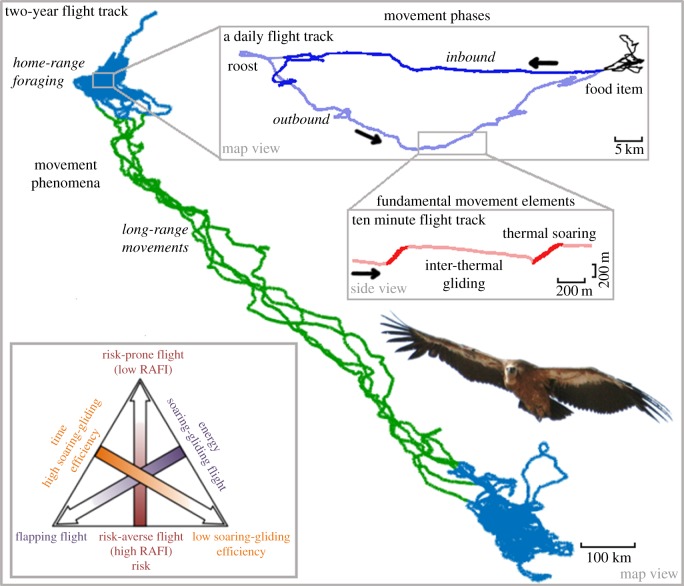Figure 1.
A description of a vulture's track over three spatio-temporal scales, illustrating some basic concepts of soaring–gliding flight. A large-scale movement track reveals different movement phenomena (home-range foraging and long-range movements). Nested within foraging are movement phases, inbound and outbound flights, from and to the central place (roost), respectively. At finer scales, movement phases comprise different fundamental movement elements (thermal soaring and inter-thermal gliding). The triangle on the bottom left represents the trade-off between minimizations of time, energy and risk for soaring–gliding birds. Each of these components is estimated by a proxy, soaring–gliding efficiency, flapping activity and risk-aversion flight index (RAFI), respectively. Arrows represent gradients starting from the best minimization for each component; best time minimization: vultures exhibit high soaring–gliding efficiency resulting in fast cross-country speed; best energy minimization: vultures soar and glide without wing flaps; best risk minimization: vultures glide relatively slowly between thermals (high RAFI).

